Journey Through Time at 3 Park Sites in Los Alamos, N.M.
This article originally appeared on My Grand Canyon
Set atop five mesas separated by beautiful canyons, Los Alamos, N.M., is home to three lesser-known national park sites that will give you a fascinating look at the history of the Southwest from ancient geology to settlements of the past to the area's nuclear history.
Valles Caldera National Preserve
Driving through the Santa Fe National Forest from Los Alamos, the first thing you'll start to notice as you approach Valles Caldera is the space between the trees growing farther and farther apart. Then, you'll come to the edge of the Valle Grande, a huge grassy open area where you can often see some of the preserve's 3,000 elk grazing.
"I still get shivers of anticipation every time I drive to the Valle," says Los Alamos County marketing specialist Kelly Stewart. "The trees fall away and there's this huge, open, beautiful space."
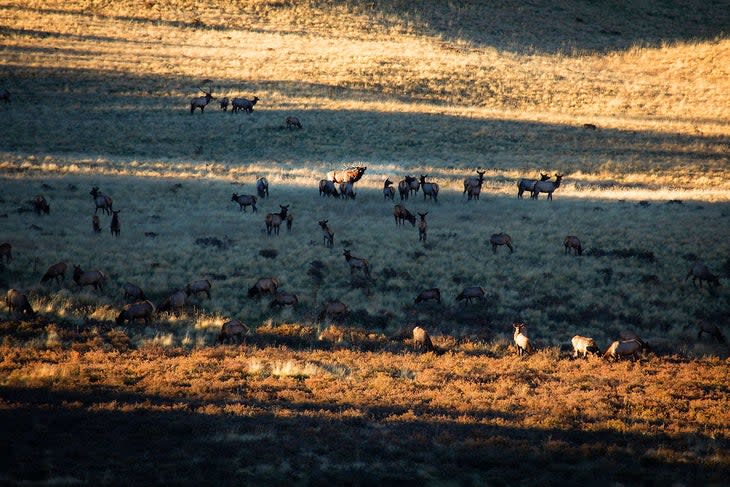
This now-dormant volcano last erupted 1.25 million years ago and created a 13-mile-wide depression that's a fascinating study in both geology and ecology today. Stop at one of the pullouts to take in the views and spot elk or go for a hike on the 2-mile Valle Grande Trail.
For a different view of the caldera, head to Pajarito Mountain Ski Area, where you can ride the chairlifts on summer weekends to access tons of great hiking and views into the caldera from the top. Ask a lift attendant for directions to the "blue bench," a favorite spot of locals where you can relax and take in the views from a blue Adirondack-style bench.
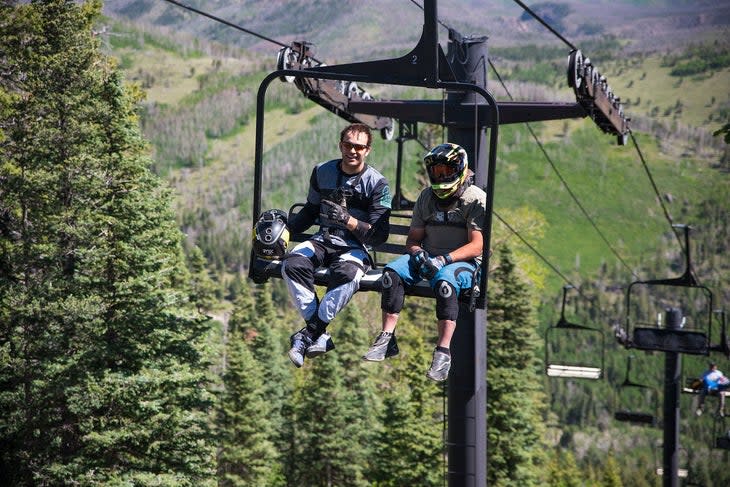
Bandelier National Monument
Fast forward a million years when you see this incredible site 25 minutes from Los Alamos. Bandelier is filled with dwellings from the Ancestral Puebloan people tucked amongst mesas and canyons. This unique site allows visitors to climb ladders, get up close to kivas and otherwise explore the remains of these ancient settlements at their own pace. The popular Pueblo Loop Trail is 1.4 miles and passes many of the most fascinating sites including Big Kiva and Long House, with an optional detour to Alcove House.
Be sure to get to Bandelier early in the morning, before the day gets hot and before the main area of Frijoles Canyon closes to private vehicle traffic, 9 a.m. - 3 p.m., June through mid-October. Otherwise, head to the White Rock Visitor Center where you can ride a free shuttle to the monument. Explore for the morning and enjoy lunch at Sirphey, the park's full-service restaurant that serves great green chile cheeseburgers.
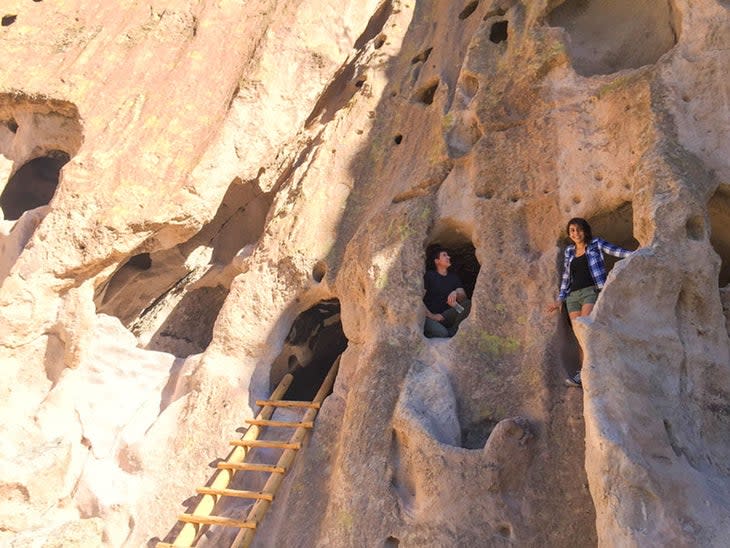
An alternative to the Frijoles Canyon area of the park is the less-visited Tsankawi section. Coming from the main area of Bandelier, look for a gravel parking lot on the right side of Hwy. 4, just past the third stoplight. Here, you can hike 1.5 miles along a mesa, literally in the footsteps of the Ancestral Puebloans as you explore the ancient village of Tsankawi.
Whether you're exploring Frijoles Canyon or Tsankawi, be respectful of the ancient history you're encountering. Practice Leave No Trace and watch where you're stepping to avoid damaging these pieces of history.
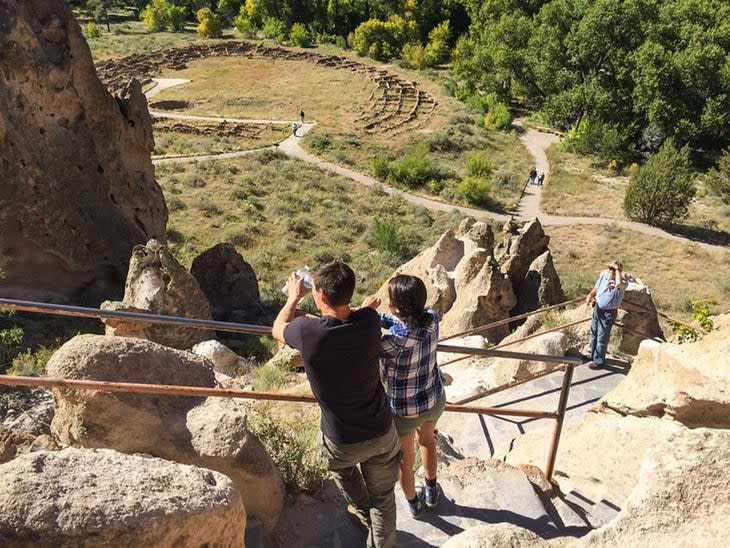
Bandelier offers a variety of interpretive programs from rangers and members of local tribes to help you better understand what you're seeing. Check with the visitor center for a calendar of events.
After spending the morning in Bandelier, explore the community of White Rock for the afternoon. Stroll the charming downtown and enjoy a late lunch or early dinner at Pig + Fig Cafe in White Rock. Open 7 a.m. - 7 p.m., you'll find fun French-inspired fare.
The Manhattan Project National Historical Park
Los Alamos became the town it is today during World War II when this part of the New Mexican desert became the perfect location for a secret laboratory where the world's first atomic weapons would be built. This national park site includes the towns of Oak Ridge, Tenn., and Hanford, Wash., where uranium and plutonium were enriched respectively, but Los Alamos was where the weapons were designed and built.
Rather than an enclosed park site, this historic park is the town of Los Alamos itself. Start at the Los Alamos Site Visitor Center to get a basic overview of the history of the Manhattan Project and then head to the Los Alamos History Museum where you can pick up a brochure for a self-guided walking tour or take a guided tour through the history of Los Alamos. In addition to taking a deeper dive into the history of the nuclear arms race, you'll see historic homes and sites important to the project's key players like Dr. J. Robert Oppenheimer.
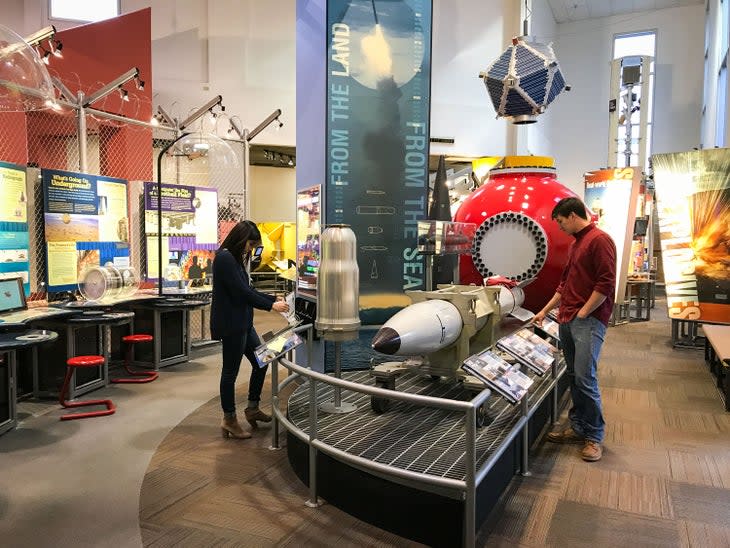
Lastly, head to the Bradbury Science Museum on the Los Alamos National Laboratory's campus where the lab's main responsibility is still to safely steward the U.S.' nuclear stockpile. At the museum, you'll find interactive exhibits on the history of the Manhattan Project and the science behind atomic weapons, but you'll also learn how the lab's cutting-edge research has contributed to advancements in science on everything from climate change to combatting COVID-19.
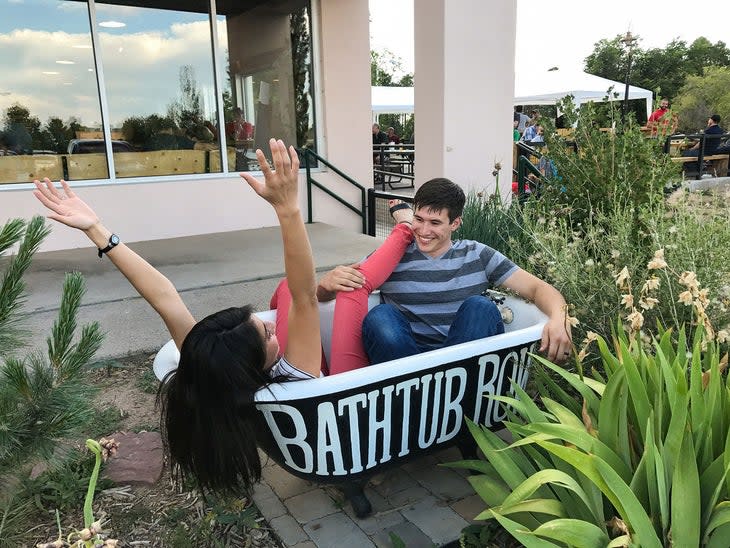
Afterwards, head to Bathtub Row Brewing Co-Op. In 1942, when Los Alamos was being built in a rush to house the Manhattan Project's employees, most of the houses and barracks were built with showers only. The five houses on Bathtub Row were relics from the historic Los Alamos Ranch School and were the only ones in town with the luxury of a bathtub. This is where the lab's most important employees lived.
Cooperatively owned, the brewery serves some of the town's favorite beer with Los Alamos-themed names like Hoppenheimer IPA.
Learn more at visitlosalamos.org.
For exclusive access to all of our fitness, gear, adventure, and travel stories, plus discounts on trips, events, and gear, sign up for Outside+ today.

